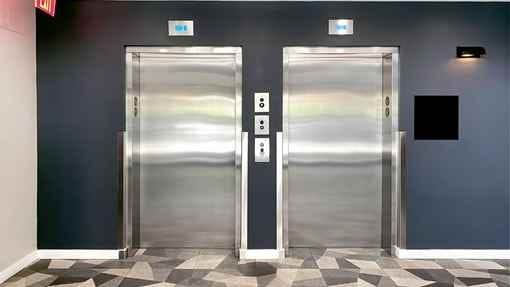Locate Reliable Lift Repair Near Me for Rapid and Affordable Service
Exploring the World of Elevators: Common Concerns Encountered by Different Lift Devices
As we navigate through the upright transportation systems of contemporary structures, elevators attract attention as an important element of our day-to-days live. Nonetheless, behind their seamless procedure exists a world of detailed devices that can often encounter difficulties. From hydraulic lifts to traction systems and machine-room-less layouts, each lift type comes with its set of common concerns. Recognizing these obstacles is crucial for ensuring the smooth performance of these important systems. Let's explore the intricacies that underlie the procedure of lifts and the possible issues that can develop, losing light on the elaborate internet of lift mechanisms.
Hydraulic Elevators
Hydraulic elevators, usually preferred for low-rise buildings, utilize fluid pressure to manage the movement of the lift vehicle (lift repair companies). This system involves a hydraulic pump pressing oil into a cylinder, triggering the elevator to relocate the preferred instructions. While hydraulic elevators are known for their smooth and silent procedure, they do include their very own collection of typical concerns
One common trouble with hydraulic elevators is oil leakage. Furthermore, concerns with the control system, such as damaged valves or a malfunctioning pump, can cause interruptions in the elevator's motion.
Normal upkeep and punctual fixings are important to ensure the smooth functioning of hydraulic elevators. By resolving these typical concerns proactively, building proprietors can decrease downtime and make certain the safety and effectiveness of their vertical transportation system.
Grip Lifts
When thinking about upright transportation systems in buildings, one more common type other than hydraulic elevators is the grip elevator. Traction lifts operate using a system of ropes and weights that move the lift auto by clutching onto the hoist ropes. This system enables smoother and quicker upright transportation contrasted to hydraulic systems.
Among the typical problems dealt with by grip lifts is rope wear. The continuous activity of the ropes within the grip system can lead to damage in time, possibly causing the elevator to breakdown or end up being dangerous for use. Regular assessments and upkeep of the ropes are important to make sure the elevator's proper functioning and safety.
Another problem that grip elevators might come across is connected to the control system. Problems with the control system can result in issues such as erratic motion, hold-ups in response times, or even total shutdowns. Normal screening and maintenance of the control system are crucial to protect against such issues and make certain the elevator's reliability.
Machine-Room-Less (MRL) Lifts
.webp)
One of the vital parts of MRL elevators is the compact gearless grip equipment that is mounted within the hoistway. This equipment effectively drives the elevator vehicle without the need for large equipment found in traditional grip elevators. Additionally, MRL lifts normally make use of a click here to read weight system to balance the car, more enhancing their power efficiency.
Regardless of their benefits, MRL elevators might deal with difficulties connected to upkeep and repair as a result of the restricted room for devices setup. Availability for servicing components within the shaft can be restricted, requiring specialized training for professionals. Appropriate upkeep routines and regular examinations are essential to ensure the ongoing smooth operation of MRL lifts.
Overloading and Weight Limit Issues
Overloading and weight limitation issues are important concerns in elevator operations. Elevator makers style raises with details weight capabilities to make sure passenger safety and security and devices durability.
When lifts are overwhelmed, it puts extreme strain on the electric motor, cable televisions, and other elements, possibly creating breakdowns or breakdowns. Security systems such as sensors and overload sensing units remain in area to avoid lifts from moving if they spot excess weight. Furthermore, going beyond weight limitations can lead to increased power intake and wear and tear on the lift system.
To alleviate overwhelming problems, building managers should prominently display weight restrictions in lifts and educate occupants on the relevance of adhering to these restrictions - lift repair companies. Routine upkeep checks by certified service technicians can also assist make certain that lifts are running within risk-free weight criteria. By addressing overloading and weight restriction problems proactively, structure proprietors can boost lift safety and effectiveness
Electric System Failings
Going beyond weight limits in lifts can not only cause mechanical issues however likewise possibly add to electric system failings within the lift infrastructure. Electrical system failings are a vital issue in lift operation, as they can cause unexpected closures, malfunctions, and even safety hazards. One typical electric issue is the getting too hot of parts due to too much present circulation triggered by overloading the elevator past its see here ability. This can cause harm to the wiring, motor, or control systems, leading to pricey fixings and downtime.
Additionally, power rises or variations in the electrical supply can likewise interrupt the elevator's procedure, impacting its performance and safety. These electric disturbances can damage delicate lift elements such as control board, motherboard, or sensing units, resulting in system failures. Normal maintenance and inspections are essential to identify and address potential electric concerns promptly, guaranteeing the safe and efficient operation of elevator systems. By sticking to weight limitations and carrying out routine electric system checks, structure proprietors can alleviate the danger of electric failures in lifts.
Verdict

Hydraulic lifts, often preferred for low-rise structures, use fluid pressure to manage the movement of click site the elevator car.When taking into consideration upright transport systems in structures, one more typical type aside from hydraulic lifts is the grip elevator. Traction lifts operate using a system of ropes and weights that relocate the lift car by clutching onto the hoist ropes. Unlike conventional elevators that call for a different maker area to house the tools, MRL elevators integrate most of the elements within the shaft, eliminating the need for a dedicated equipment space.In final thought, lifts encounter typical issues such as hydraulic breakdowns, grip system failures, and electrical system problems.